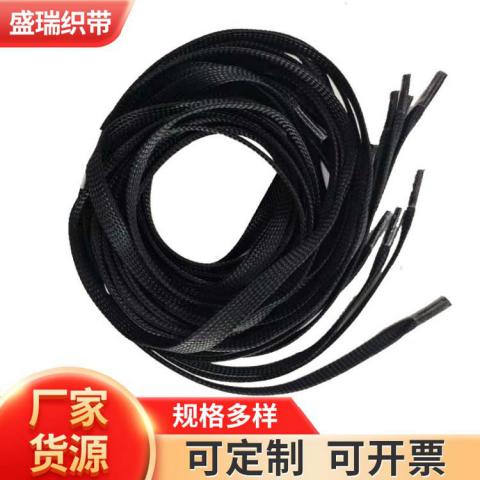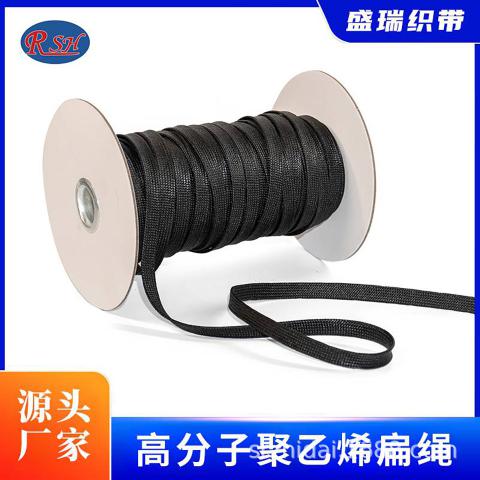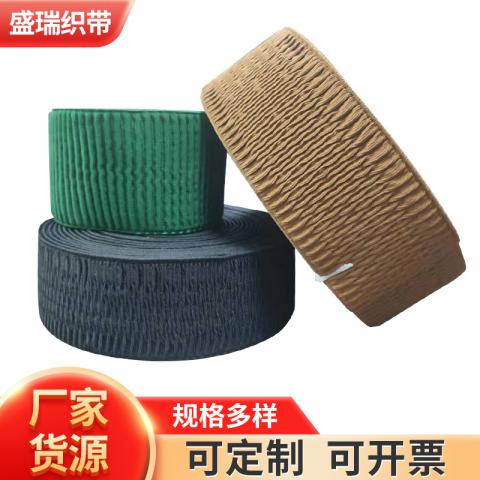
Sports equipment
In the field of sports equipment, our webbing is used to fix and support yoga mats, fitness equipment, etc. High-strength nylon webbing provides stable support and is suitable for outdoor sports equipment. Specially treated polyester webbing is corrosion-resistant and high-temperature resistant, enhancing the durability of the equipment. Customized services improve the equipment's performance and safety.
In the dynamic and passionate world of sports, sports equipment serves as a great helper for us to shed sweat and challenge ourselves. And webbing, seemingly an unremarkable yet highly functional material, demonstrates ingenious and crucial applications in aspects such as the fixation and auxiliary use of sports equipment, making our sports experience safer and more convenient. Today, let's explore the diverse applications of webbing in the field of sports equipment together!
Fixation Function: Ensuring Safety and Stable Use
Whether in the gym or outdoor sports venues, many sports equipment rely on webbing for effective fixation, which plays a vital role in ensuring the safety of users and the stability of the equipment itself.
Take the yoga mat as an example. When we practice yoga, we need the yoga mat to remain flat and stable at all times, avoiding situations such as slipping and shifting during various poses, which could affect the practice effect and even cause injuries. At this time, the webbing equipped around the yoga mat comes into play. By setting webbing buckles at the corners of the yoga mat and then using elastic webbing to connect it to fixed points on the ground, such as table legs, railings indoors, or fences outdoors, the yoga mat can be firmly fixed in place. This allows us to fully immerse ourselves in the stretching and twisting movements of yoga without worrying about the mat suddenly "running away."
Looking at some large-scale fitness equipment, such as the multi-functional training apparatus, which is composed of multiple components with different functions. The connection stability between various components is of great significance. Webbing is often used to connect these components. For example, the barbell rack and the dumbbell rack are fixed together with high-strength webbing. This ensures that during the frequent replacement of equipment and strength training by the user, the entire training apparatus will not become loose or shaky due to intense vibration or uneven stress, creating a safe and reliable exercise environment for the user, enabling them to confidently challenge higher training intensities.
Another example is the outdoor hammock, which hangs on trees or special fixed stakes by the webbing at both ends. These webbings need to have good load-bearing capacity and wear resistance to stably support the weight of the human body, allowing people to lie comfortably in the hammock and enjoy their leisure time. At the same time, it can withstand the wind, sun, and the tests of different usage scenarios, ensuring that the hammock remains firm and reliable during long-term use.
Auxiliary Use: Enhancing Experience and Facilitating Sports
Webbing also plays an important role in the auxiliary use of sports equipment, helping us better operate the equipment, improving the convenience and comfort of sports, and making sports more relaxed and natural.
On some adjustable sports equipment, webbing is a key element for achieving the adjustment function. For example, some skipping rope handles are equipped with a webbing adjustment device. By pulling the webbing, we can easily adjust the length of the skipping rope to perfectly fit our height. Whether it's children or adults, they can find the most suitable skipping rope length, thus maintaining a good rhythm and coordination in the skipping rope exercise and avoiding problems such as tripping or poor force due to the rope being too long or too short.
For some sports equipment that requires auxiliary fixation of body parts, webbing is equally indispensable. For example, when doing pull-up training, the auxiliary pull-up equipment usually comes with webbing. Users can place their feet or knees on the webbing and adjust the tightness of the webbing to share part of their body weight, making the pull-up action easier to master. This helps beginners gradually build strength and master the correct movement skills. At the same time, it enables advanced users to better control the force and rhythm during high-difficulty training, achieving a better training effect.
Another example is the pedal part of the spinning bike, where there is a fixed strap made of webbing. It can tightly bind our feet, preventing them from slipping off the pedals during intense exercises such as fast cycling and standing cycling. This ensures that we can focus on following the class rhythm or adjusting the cycling intensity and fully enjoy the exciting sports experience brought by the spinning bike.
Considerations of Material and Design: Adapting to Sports Needs
In order to meet the diverse usage scenarios and requirements of sports equipment, the webbing applied in it is carefully considered in terms of material and design.
In terms of materials, different performance webbing materials are selected according to the characteristics of different sports equipment. For large-scale fitness equipment and hammocks that need to bear heavy weights and tensile forces, high-strength polyester fiber webbing is generally used. This material has high tensile strength and good wear resistance, and can stably play the role of fixation and support for a long time. For webbing that comes into direct contact with human skin and needs to have certain elasticity, such as skipping ropes and spinning bike pedal fixed straps, cotton or blended webbing containing elastic fibers is selected. They are soft, comfortable, and skin-friendly. While ensuring functionality, they can bring users a good touch and avoid skin discomfort caused by long-term use.
From a design perspective, the length, width, and connection methods of the webbing have been carefully planned. For example, the webbing for fixing large equipment is usually designed to be wider to increase the force-bearing area, disperse the pressure, and improve the stability of fixation. The webbing used for the adjustment function is equipped with easy-to-operate adjustment devices, such as buckles and drawstrings, allowing users to easily adjust according to their own needs, making the use of sports equipment more user-friendly.
The Significance of Webbing in the Sports Field
The application of webbing in sports equipment is often overlooked, but it actually improves the performance of sports equipment, bringing a lot of convenience and safety guarantees to our sports life. It makes the use of sports equipment more stable and reliable, reducing the sports risks caused by equipment problems. At the same time, through its auxiliary functions, it helps sports enthusiasts of different levels better participate in various sports, stimulates people's enthusiasm for sports, and helps everyone move forward on the path of pursuing health and self-breakthrough.
Whether it is professional athletes or ordinary fitness enthusiasts, they all benefit from the ingenious application of webbing in sports equipment. It can be said that webbing has become an indispensable part of the sports equipment field. It cooperates with various sports equipment to jointly create a higher-quality, safer, and more convenient sports environment for us, making sports more beautiful.
In conclusion, the application of webbing in sports equipment reflects its unique value. With the continuous development of the sports industry and the increasing demands of people for sports experience, it is believed that webbing will continue to play a greater role in this field, adding more splendor to our sports journey.
Related products
Nylon high elasticity bias rope
Shengrui Webbing provides you with manufacturer recommended products such as nylon high elastic bands, bias ropes, clothing pants, waistbands, hoodies, hat ropes, shoelaces, sportswear, hat drawstrings, etc. Here, numerous suppliers, buyers, and manufacturers gather. To learn more about manufacturer recommendations for nylon high elastic bands, bias ropes, clothing pants waist, hoodies, hat ropes, shoelaces, sportswear, and hat drawstrings, please visit Shengrui Webbing Network!
Nylon flat rope
Shengrui Webbing provides you with manufacturer recommended nylon flat rope, digital handheld rope, water cup rope, and various styles and colors that can be customized. Shengrui Ribbon is a professional ribbon manufacturer.. To learn more about the manufacturer's recommended nylon flat rope, digital handheld rope, water cup rope, and various styles and colors that can be customized, please visit Shengrui Webbing Network!
Weaving UHMWPE ultra-high molecular weight polyethylene flat rope
Shengrui Webbing provides you with products such as woven UHMWPE ultra-high molecular weight polyethylene flat ropes, strong tensile and wear-resistant hanging ropes, etc. Here, numerous suppliers, buyers, and manufacturers gather. For more information on woven UHMWPE ultra-high molecular weight polyethylene flat rope, strong tensile and wear-resistant hanging rope, please visit Shengrui Webbing Network!
Polyester Ripple Wrinkle Elastic Band
Shengrui Webbing provides you with recommended products such as polyester corrugated wrinkles, elastic bands, hats, waistbands, elastic edging, home textiles, and clothing. Shengrui Ribbon is a professional ribbon manufacturer.. For more information on recommended polyester corrugated wrinkle elastic bands, hats, waistbands, elastic edging, and home textile clothing from shopkeepers, please visit Shengrui Webbing Wholesale website!



